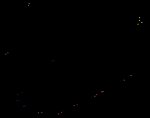gordo
Well-known member
In a recent Kodak FlexoGlobal webinar "Do more with 4" it was claimed that with "Flexcel nx a printer can reproduce, using just 4 process colors, 72% of the Pantone Plus library with a deltaE of less than 3." Also that with "a different customer - 80% of the Pantone Plus library could be reproduced."
However, on Kodak's Spotless solution poster (downloadable from the Kodak website), the percentage of Pantone spot colors (fewer colors than the Pantone Plus library) that can be reproduced using offset and a 7 colour process with a DE of less than 3 is just 50%.
Basically the claim is that 4/C flexo with flexcel nx has a larger gamut than offset using a 7/C process (72%-80% vs 50% of spot colors simulated) - a 44% increase in the number of Pantone Plus spot colors that can be simulated.
I've reached out to Kodak a month ago about this discrepancy, but so far no explanation.
If you are shown the webinar or see other marketing material that makes this gamut claim, it might be a good idea to ask for an explanation regarding the discrepancy.
best, gordo
However, on Kodak's Spotless solution poster (downloadable from the Kodak website), the percentage of Pantone spot colors (fewer colors than the Pantone Plus library) that can be reproduced using offset and a 7 colour process with a DE of less than 3 is just 50%.
Basically the claim is that 4/C flexo with flexcel nx has a larger gamut than offset using a 7/C process (72%-80% vs 50% of spot colors simulated) - a 44% increase in the number of Pantone Plus spot colors that can be simulated.
I've reached out to Kodak a month ago about this discrepancy, but so far no explanation.
If you are shown the webinar or see other marketing material that makes this gamut claim, it might be a good idea to ask for an explanation regarding the discrepancy.
best, gordo
Last edited:

















